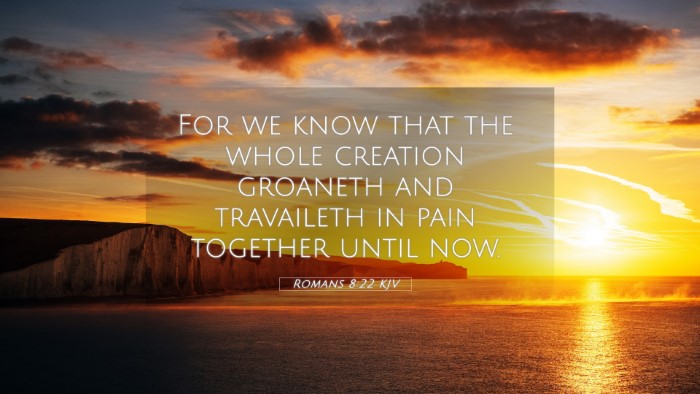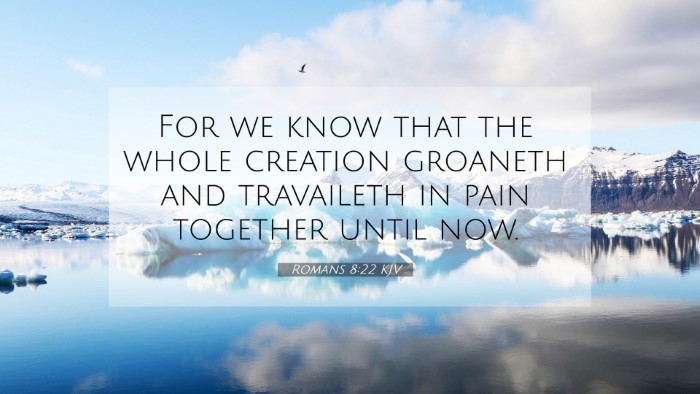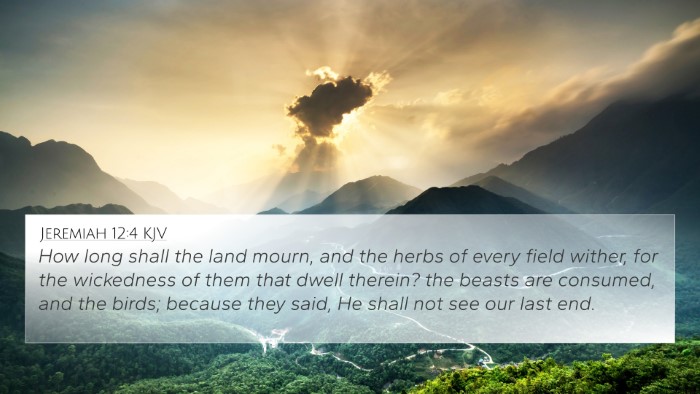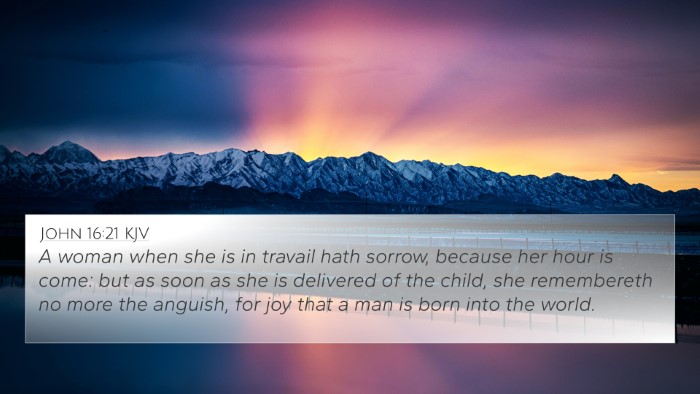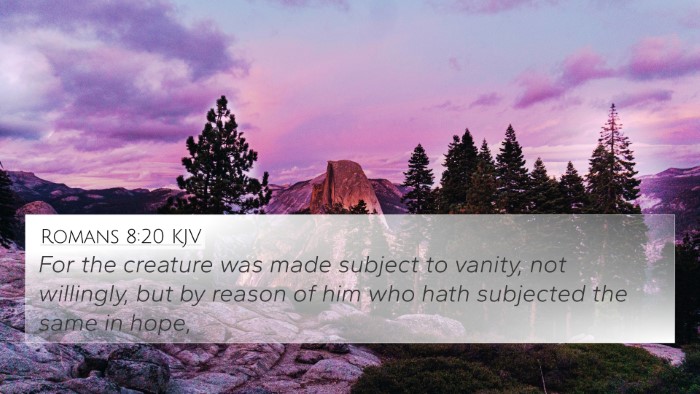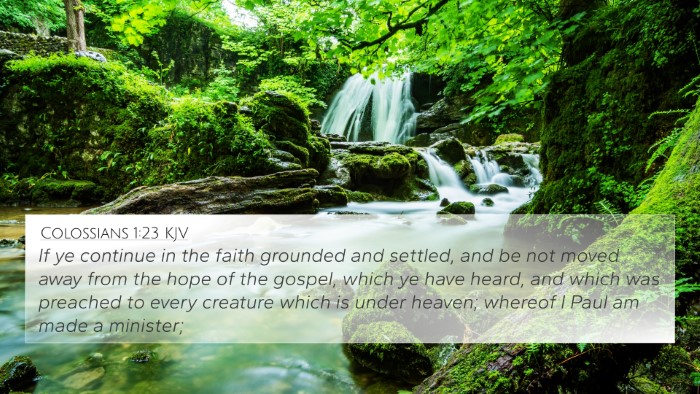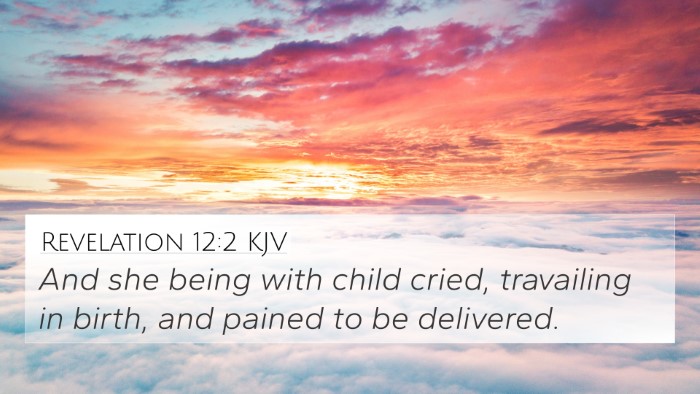Understanding Romans 8:22
Romans 8:22 states, "For we know that the whole creation groaneth and travaileth in pain together until now." This verse encapsulates profound theological themes related to suffering, hope, and the interconnectedness of all creation awaiting redemption.
Summary of Key Insights
Paul, in this passage, emphasizes the universal experience of suffering that not just humans endure, but all of creation. Drawing on insights from various public domain commentaries, we can explore deeper meanings:
- Matthew Henry: He highlights that Paul's use of "whole creation" signifies every part of the universe is involved in this groaning, depicting a world in turmoil yet in hopeful expectation of salvation.
- Albert Barnes: Barnes notes that this suffering is not similarly meaningless; instead, it is part of the current state of existence that groans against the bondage of corruption while looking forward to glorious liberation.
- Adam Clarke: Clarke emphasizes that the pain referenced is akin to childbirth, implying that the struggles we see in the world are birthing a new creation and a new order where righteousness will eventually reign.
Emotional and Theological Resonance
The phrase "groaneth and travaileth" brings a vivid imagery of labor pains, suggesting both deep anguish and the anticipation of birth. Paul personifies creation itself as a participant in the redemptive narrative, showing the hope that accompanies suffering.
Cross References and Thematic Connections
Understanding Romans 8:22 becomes richer when we consider the following cross-references:
- Genesis 3:17-19: Themes of curse and labor pains following the Fall.
- Isaiah 24:4-6: The earth mourning due to its inhabitants’ disobedience.
- John 16:21: Jesus' analogy of a woman in labor, signifying that joy follows pain.
- 2 Corinthians 5:2-4: Yearning for the eternal, heavenly body, contrasting earthly suffering.
- Revelation 21:1: Promises of a new heaven and a new earth, culminating in restoration.
- Galatians 4:19: Paul expresses his anguish for believers until Christ is formed in them.
- Matthew 24:8: Describing the beginnings of sorrows leading up to the second coming.
- Colossians 1:20: The reconciliation of all things through Christ's blood, echoing creation’s connection to redemption.
- Hebrews 12:22: A gathering of the heavenly hosts and spirits awaiting completion of God’s plan.
- 1 Peter 1:20: The foreknowledge of God regarding Christ's sacrifice for our salvation.
How to Use Cross-References for Deeper Study
To explore these connections, tools for Bible cross-referencing can be invaluable. Consider the following methods for effective cross-referencing:
- Bible Cross-reference Guide: Utilizing concordances can help identify connections by keyword or theme.
- Scriptural Cross-referencing Tools: Online tools and Bible study software provide structured cross-reference systems.
- Chain References: Following through from one verse to related verses can create a thematic understanding.
- Bible Verse Parallels: Noting the similarities and contrasts in thematic elements across different sections of scripture.
- Detailed Comparative Study: Engaging in a meticulous analysis of Pauline epistles and other biblical writings.
Final Thoughts
Romans 8:22 invites believers to recognize and validate the suffering inherent in creation, alongside a profound expectation and hope for the future restoration through Jesus Christ. This understanding equips believers to navigate life's challenges while fostering an appreciation of the overarching narrative of redemption that permeates scripture. Through effective cross-referencing, we can immerse ourselves deeper into the dynamics of these inter-Biblical dialogues and thematic connections.

